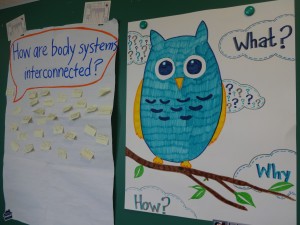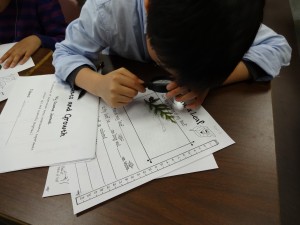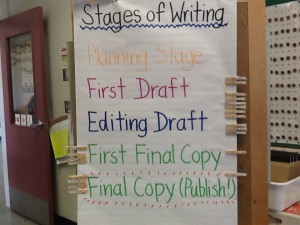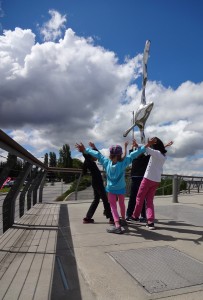My Pedagogy
Teaching is about nurturing each child in their development as citizens of our community. With this in mind, I strive to incorporate mindfulness activities to encourage students to learn through their minds, bodies, and hearts. In my experience, I have noticed significant changes in my students’ attentiveness and willingness to inquire. Learning requires a balance of one’s whole self, and as a teacher I hope to guide my students’ growth holistically.
In my teaching, my role is to be a facilitator for my students’ learning. I often create a basic framework where students encounter authentic objects and environments, which provoke their natural curiosity and desire to share their connections. My classroom is a highly collaborative space, where students must learn to respect each other’s thinking and learning process. I believe that in a safe, open- inquiry learning environment students have the opportunity to contribute their strengths to the class. In our exploration, I try not to attribute students’ connections with right/wrong assessments. Rather, I prompt them using open questioning strategies such as, “How do you think this is connected to that?” “What are some possible reasons why…?” “Can you explain your thinking to me?” “What are some steps you might take next?” Throughout the inquiry unit, I incorporate question boards and online webs spaces where I make the students’ learning transparent. I believe that students are more likely to build upon their understanding by reflecting on their past assumptions. In this way I further each child’s learning in highly individualized ways.
My assessment of my students is considerate of the multiple ways students learn, and my purpose for assessment is to enrich the student’s understanding. I offer them choice, and give them opportunities to re-edit and re-submit their work. By doing so, I teach them that their work in school is not for marks to enter into a report card, but rather it is a show of how much they care about their own growth. My relationship with my students is builtupon the mutual trust we have, that I am there to support their growth, and that they will become the best person they can be.
The creation of portfolios is an excellent example of how I assess and teach my children. In my experience, I find that my students are great self- evaluators when they are taught to be. In all our assignments and inquiry, I create expectations with my students so that they are aware of them. As the term collects more samples of their work, I often check- in with them and ask them to fill out a self- evaluation form with a space for further improvement. Students enjoy taking ownership of their own learning, and appreciate being given a choice. In this way, I practice differentiated instruction to accommodate my diverse class.
Respect and service are values that I hold strongly, and practice. I bring this into my teaching by connecting with community partners to create opportunities for my students to be involved in their community. Students who feel a stronger connection to their community often become more purposeful in their learning. They may begin to see where they belong in the community. It is my hope that my students become contributors to our community, because I believe they learn to care and respect other people than their peers. In my teaching practicum, I sought out pen pals from a rural Ugandan school whom my students wrote to; their purposeful writing allowed them to appreciate the subtleties of communication and cultural differences. We also connected with a local art group, and one of the artworks was incorporated into our unit of study. I provided books and websites as contexts of the local art installation, and prompted my class to think about how our learning in the classroom is connected to our community.




